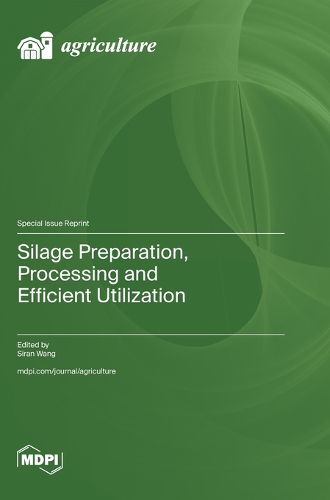Readings Newsletter
Become a Readings Member to make your shopping experience even easier.
Sign in or sign up for free!
You’re not far away from qualifying for FREE standard shipping within Australia
You’ve qualified for FREE standard shipping within Australia
The cart is loading…






This title is printed to order. This book may have been self-published. If so, we cannot guarantee the quality of the content. In the main most books will have gone through the editing process however some may not. We therefore suggest that you be aware of this before ordering this book. If in doubt check either the author or publisher’s details as we are unable to accept any returns unless they are faulty. Please contact us if you have any questions.
Ensiling is a technique for the long-term preservation of feed; it is both effective and widespread, and is characterized by its low cost and ease of operation. At the initial stage of ensiling, water-soluble carbohydrates are broken down into carbon dioxide, water, and energy under the respiration of aerobic bacteria. As oxygen is depleted, lactic acid bacteria attached to forage multiply and convert WSC into organic acids, thereby creating an anaerobic and acidic environment, which, in turn, inhibits the activities of undesirable bacteria, such as clostridia, and reduces the risk of forage spoilage. Ensilage is a complex process involving the actions of microbes and biochemical variations. It is one of the most significant methods of preserving herbages. Animals that consume silage have been shown to enhance the bioavailability of animal protein and decrease methane emissions. A plethora of silage resources are available on Earth. However, the utilization rates remain low, resulting in significant resource wastage and substantial environmental degradation. Conversely, the accelerated growth in animal production has resulted in a persistent annual deficit of animal roughage. Consequently, there is a need to investigate the recent situations of silage preparation, processing, and efficient utilization. This reprint, entitled "Silage Preparation, Processing and Efficient Utilization", comprises one editorial and eleven original research articles. Collectively, these contributions illustrate the promising future of silage application, with the objective of advancing the field of animal feed.
$9.00 standard shipping within Australia
FREE standard shipping within Australia for orders over $100.00
Express & International shipping calculated at checkout
This title is printed to order. This book may have been self-published. If so, we cannot guarantee the quality of the content. In the main most books will have gone through the editing process however some may not. We therefore suggest that you be aware of this before ordering this book. If in doubt check either the author or publisher’s details as we are unable to accept any returns unless they are faulty. Please contact us if you have any questions.
Ensiling is a technique for the long-term preservation of feed; it is both effective and widespread, and is characterized by its low cost and ease of operation. At the initial stage of ensiling, water-soluble carbohydrates are broken down into carbon dioxide, water, and energy under the respiration of aerobic bacteria. As oxygen is depleted, lactic acid bacteria attached to forage multiply and convert WSC into organic acids, thereby creating an anaerobic and acidic environment, which, in turn, inhibits the activities of undesirable bacteria, such as clostridia, and reduces the risk of forage spoilage. Ensilage is a complex process involving the actions of microbes and biochemical variations. It is one of the most significant methods of preserving herbages. Animals that consume silage have been shown to enhance the bioavailability of animal protein and decrease methane emissions. A plethora of silage resources are available on Earth. However, the utilization rates remain low, resulting in significant resource wastage and substantial environmental degradation. Conversely, the accelerated growth in animal production has resulted in a persistent annual deficit of animal roughage. Consequently, there is a need to investigate the recent situations of silage preparation, processing, and efficient utilization. This reprint, entitled "Silage Preparation, Processing and Efficient Utilization", comprises one editorial and eleven original research articles. Collectively, these contributions illustrate the promising future of silage application, with the objective of advancing the field of animal feed.